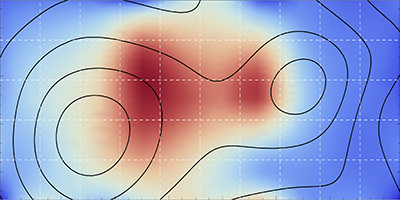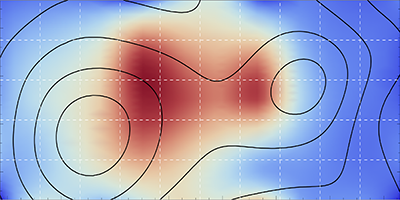Spatial Tests of Dark Matter
Dark matter constitutes roughly one quarter of the energy density of the Universe, but its composition remains unknown. Indirect searches aim to determine the presence and nature of dark matter by detecting photons produced when it decays or annihilates. Recent observations of a spectral line at 3.5 kilo-electron-volts from certain galaxy clusters and of a gamma-ray excess from the Galactic Center have been interpreted as possible dark matter signatures. However, more mundane origins of the signals, e.g., pulsars or emission from potassium atoms, have not yet been ruled out. Now, a research group led by Peter Graham at Stanford University, California, has proposed that high-spatial-resolution observations of the sky could provide a “smoking gun” for decaying dark matter.
Graham and his team suggest that the best chance of confirming a dark matter signal comes from galaxy clusters in the process of merging. During a merger, baryonic matter interacts electromagnetically, while dark matter sails through unimpeded because of its extremely small interaction cross section. This leads to two distinct spatial distributions of matter. Accurate maps of baryonic matter (traced via x-ray emission from hot gases) and dark matter (traced by gravitational lensing) could thus help assess the statistical significance of a photon signal purportedly due to dark matter. Using data from two galaxy clusters that recently underwent a merger, the Coma Cluster and the Bullet Cluster, the researchers show their methodology could unambiguously assess whether unexplained gamma or x-ray photons are associated with dark matter. The analysis proposed by the authors could be carried out with high-resolution data from existing x-ray telescopes or from the upcoming gamma-ray Cherenkov Telescope Array.
–Katherine Kornei
This research is published in Physical Review D.





